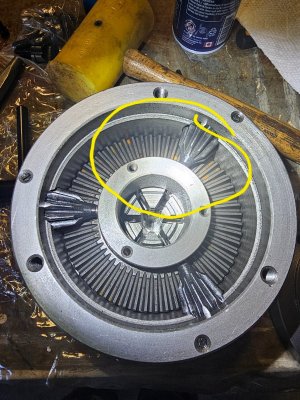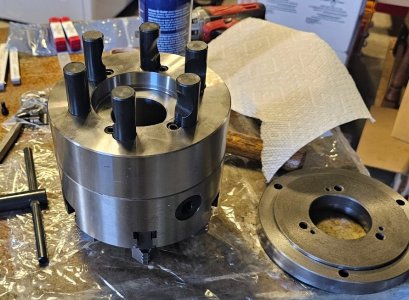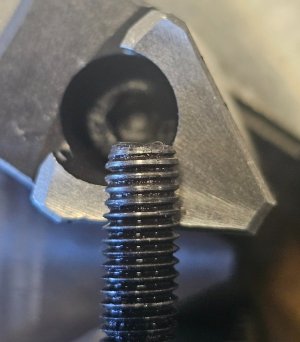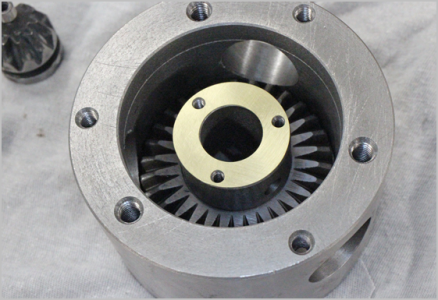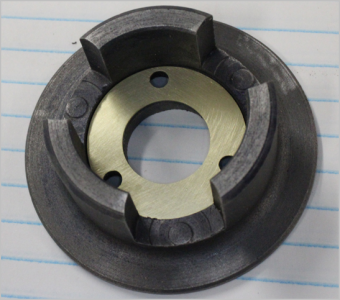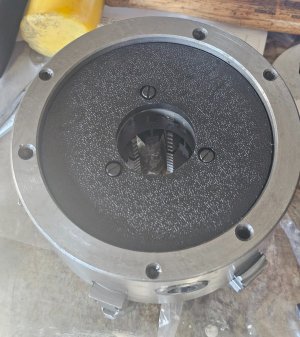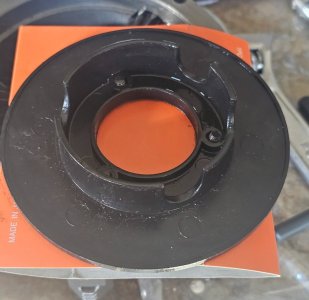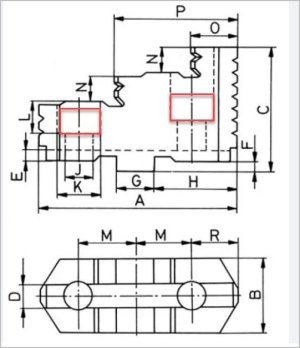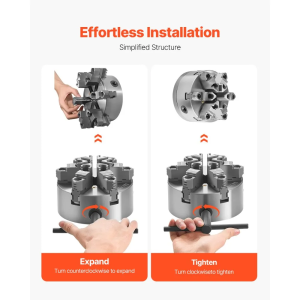On the strength of @Mike R - 's experience, I ordered a Vevor 6Jaw Chuck too.
Post in thread 'Mikes shop activities' https://canadianhobbymetalworkers.com/threads/mikes-shop-activities.14711/post-211279
It arrived today.
To avoid surprise, I think it's a beauty.
Doesn't seem to have as many burrs as his. Go figure. Mine is a wee bit tight - but very evenly tight which is WAAAY better than loose. I expect it to loosen up properly after some use. I might just run it in and out a few dozen times till its happy. The only burrs I can see or feel are around the chuck key holes where they don't matter. I may leave them as is or fix them at a future date. Some of the machined edges are on the sharp side but not so sharp as to cut you. I don't think I'll bother trying to make them better.
Unless I can modify it to 6 stud, I'll be selling/trading the backplate as is so I didn't even bother looking at it other than to check the lock screw depth for Mike's benefit. Mine is the same as his. If I tighten them, the cam studs will turn right over the screw head. Looking at mine, I have zero qualms about my previous advice to make sleeves to space out the screws 150 thou or so. I think 10 to 15 thou under the surface is ideal.
The chuck itself is really nice. I was a bit surprised to find that the smallest OD it will hold when fully closed is actually a fairly big OD. It looked like about 3/8ths. So I tested it and found that 21/64ths is loose and it will hold 11/16ths. Prolly best to assume its smallest size is about 3/8ths. But in hind sight it's either that or a much smaller jaw surface. I'm ok with the choice of comprise they made. For small parts I almost always use my 5C collet chuck anyway.
I was also pleasantly surprised to discover that the key is the same size as the one for my 3 and 4 jaw chucks. My Smile Key and 12V Milwaukee Drive key will work just fine on it. Nice! I really dislike having 500 different chuck key sizes.
Thanks for "Leading The Way" on this one @Mike R! It will put an end to what seemed like a never-ending quest for a decent 6 jaw chuck.
Now to work on finding or making the right D1-5 backplate or backplate/spacer combination.
Post in thread 'Mikes shop activities' https://canadianhobbymetalworkers.com/threads/mikes-shop-activities.14711/post-211279
It arrived today.
To avoid surprise, I think it's a beauty.
Doesn't seem to have as many burrs as his. Go figure. Mine is a wee bit tight - but very evenly tight which is WAAAY better than loose. I expect it to loosen up properly after some use. I might just run it in and out a few dozen times till its happy. The only burrs I can see or feel are around the chuck key holes where they don't matter. I may leave them as is or fix them at a future date. Some of the machined edges are on the sharp side but not so sharp as to cut you. I don't think I'll bother trying to make them better.
Unless I can modify it to 6 stud, I'll be selling/trading the backplate as is so I didn't even bother looking at it other than to check the lock screw depth for Mike's benefit. Mine is the same as his. If I tighten them, the cam studs will turn right over the screw head. Looking at mine, I have zero qualms about my previous advice to make sleeves to space out the screws 150 thou or so. I think 10 to 15 thou under the surface is ideal.
The chuck itself is really nice. I was a bit surprised to find that the smallest OD it will hold when fully closed is actually a fairly big OD. It looked like about 3/8ths. So I tested it and found that 21/64ths is loose and it will hold 11/16ths. Prolly best to assume its smallest size is about 3/8ths. But in hind sight it's either that or a much smaller jaw surface. I'm ok with the choice of comprise they made. For small parts I almost always use my 5C collet chuck anyway.
I was also pleasantly surprised to discover that the key is the same size as the one for my 3 and 4 jaw chucks. My Smile Key and 12V Milwaukee Drive key will work just fine on it. Nice! I really dislike having 500 different chuck key sizes.
Thanks for "Leading The Way" on this one @Mike R! It will put an end to what seemed like a never-ending quest for a decent 6 jaw chuck.
Now to work on finding or making the right D1-5 backplate or backplate/spacer combination.

